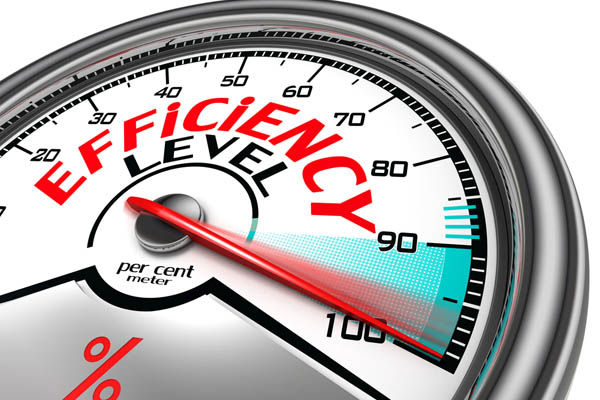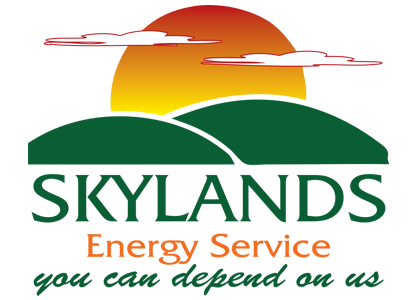
Energy Star states that your home’s heating and cooling system accounts for almost 50% of your overall energy bills. Therefore, you can cut your energy costs by making smart decisions about your HVAC system’s repairs, replacements, and tune-ups. You should also be knowledgeable with AFUE of your current system or during a heating system replacement as it directly impacts your energy consumption and bills. Read on to find out all you need to know regarding AFUE rating.
The Definition Of AFUE Rating
Table of Contents
The Annual Fuel Utilization Efficiency (AFUE) is a percentage that was created by the American Society of Heating, Refrigerating, and Air Conditioning Engineers (ASHRAE). Essentially, the AFUE rating is the furnace, boiler, water heater, or other heating system’s measure of energy efficiency. AFUE can be generally defined as the ratio of the heat produced in comparison with the total amount of fuel used by a heating unit.
Divide the amount of fuel used by the system by the amount of heat generated, typically in British thermal units (BTU), to calculate your heating system’s AFUE rating. For example, if the system’s AFUE value is 85%, then 85% of its fuel energy is used for heating while the remaining 15% is lost to inefficient burners and chimneys, among others. Take note that AFUE doesn’t factor in the heat lost via ductwork and HVAC piping. The heat loss could also be a considerable amount. Per the US Department of Energy (DOE), ductwork in attics, garages, and other unconditioned areas could cause you to lose as much as 30% of the furnace energy output.
High AFUE values usually signify higher energy efficiency and vice versa. Therefore, having a high AFUE rating means you’ll have reduced fuel costs. However, take note that electric heat pumps don’t use AFUE while in heating mode. They utilize Heating Seasonal Performance Factor (HSPF) instead. Currently, the US DOE utilizes AFUE as the national measurement standard to determine the combustion efficiency of a heating system.
The DOE sets the minimum AFUE ratings for gas or oil heaters to encourage energy efficiency throughout the country. It is currently at 80% for the Southwest region and 90% for the Northern region. As a result, nearly all newly-produced furnaces today have a 90% AFUE rating or higher.
How To Find The AFUE Rating
The Federal Trade Commission has made it a requirement for all furnace and boiler manufacturers to include the AFUE ratings of their products. This way, consumers can make informed decisions before purchasing the product. Most manufacturers put this in the yellow tag in most appliances called the EnergyGuide label. If you can’t find it or no rating is indicated in it, check the owner’s manual or the website of the manufacturer or retailer. Remember that the energy efficiency of a heating system reduces as time passes. Hence, the printed AFUE rating might be higher than the actual rating. Consult a professional HVAC technician to get the actual AFUE rating of your system.
What Is A Good AFUE Rating?

The DOE states that a good AFUE rating is anywhere above 80% and 90% for the Southwest and Northwest regions, respectively. However, heating systems usually get less efficient as time passes. Outdated or under-performing heating systems can have AFUE ratings as low as 56% to 70%. The DOE standards require that the AFUE ratings of new systems should be at least 78%. Heating systems can be classified into three based on their AFUE ratings. These classifications are low-efficiency systems (less than 80%), mid-efficiency systems (80% to 89%), and high-efficiency systems (90% or higher). The highest AFUE rating is 97% to 98.5% due to heating system inefficiencies, such as distribution and firing losses.
How Can Homeowners Use AFUE Ratings?
AFUE measures a furnace operation’s efficiency. In general, furnaces lose efficiency over time, so it is to be expected that older furnaces have lower AFUE ratings. Heating systems sold in the United States before 1975 were not required to meet a minimum AFUE rating. In 1987, the DOE set the minimum AFUE rating at 78%. It was then raised to 80% in 2015. Furnaces that are 15 years old or older tend to be inefficient and costly to operate. As a matter of fact, you will have more energy savings and reduced energy bills when you replace it with a low-efficiency system with an 80% AFUE. To achieve greater savings, select a furnace with a higher rating. Systems that have the most energy efficiency today have about 98.5% AFUE. Remember that the AFUE rating you choose will significantly affect your carbon footprint and energy bills.
Should I Buy A High-Efficiency Furnace?
There are several factors to be considered to answer this query. The first one is where you live. For example, a high-efficiency furnace is best if you live in a cold region as it will provide you with higher energy savings as time passes. A high-efficiency furnace can be 18.5% more energy efficient compared to a low-efficiency one. Various studies suggest that American households pay around $600 or more on average annually. With a high-efficiency system, you could have as much as $111 in savings every year.
You also need to factor in your budget. High-efficiency furnaces have an average cost of around $1,000 more than mid-efficiency ones. However, furnaces generally have a 15 to 20-year lifespan. Hence, saving $111 for 15 years will add up to more than $1,600. This means that you will recoup the additional cost of the system installation over time.
Features of High AFUE Furnaces
Furnaces with high AFUE ratings are generally equipped with new technologies and features to provide you with unbeatable energy efficiency. Several outstanding features from such systems are:
- Variable-speed blowers
- Variable heat output
- Secondary heat exchanger
- Enhanced air filters
- Direct spark ignition systems
Conclusion
A heating system’s measure of energy efficiency is the AFUE rating. The US DOE utilizes AFUE in setting furnace efficiency standards across the country. It is mandated that all furnaces sold in the United States should have an 80% AFUE rating or higher.
Call Skylands Energy Service For All Of Your HVAC Requirements
 For all your heating and cooling service needs in central New Jersey, do not hesitate to call Skylands Energy Service. Our professionally certified technicians offer high-quality HVAC repairs, installations, maintenance, and more. All our skilled techs have extensive knowledge and experience to service any HVAC system correctly.
For all your heating and cooling service needs in central New Jersey, do not hesitate to call Skylands Energy Service. Our professionally certified technicians offer high-quality HVAC repairs, installations, maintenance, and more. All our skilled techs have extensive knowledge and experience to service any HVAC system correctly.
Skylands Energy Service offers highly competitive HVAC service prices in the area. Our tune-up services can increase your home’s energy efficiency and improve your comfort while reducing your energy costs. When you need to replace or repair your HVAC system, we can recommend the best solutions within your budget. Your satisfaction is our priority, so all our work is guaranteed. Book a service appointment with Skylands Energy Service today. Call now and receive a free in-home estimate.
Contact us now at (908) 707-1776 to find out more!

